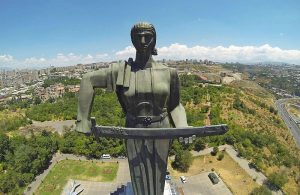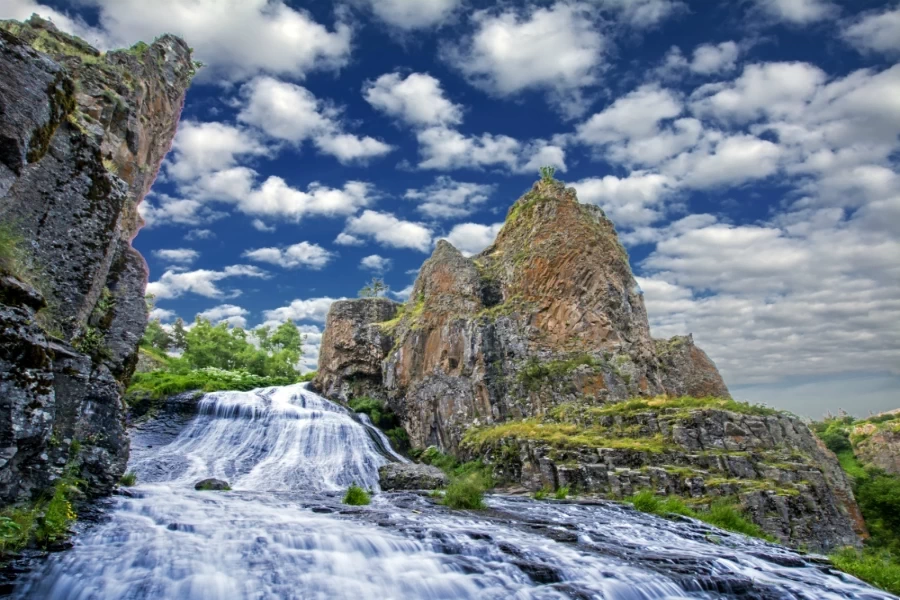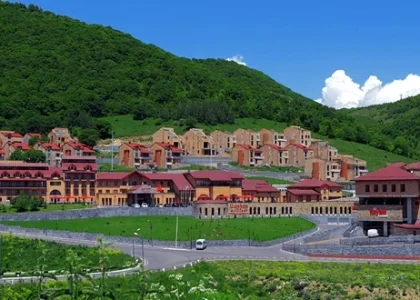Lake Sevan is the largest body of water in Armenia and the Caucasus region, and one of the largest high-altitude (alpine) freshwater lakes in Eurasia. Located in the Gegharkunik Province at an altitude of 1,900 meters (6,234 feet) above sea level, the lake’s basin covers approximately 5,000 square kilometers (1,900 square miles), constituting one-sixth of Armenia’s territory. The lake itself spans 1,242 square kilometers (480 square miles) with a volume of 32.8 cubic kilometers (7.9 cubic miles). It is fed by 28 rivers and streams, with only 10% of its outflow passing through the Hrazdan River while the remainder evaporates.
Economic, Cultural, and Recreational Importance:
Lake Sevan holds significant economic, cultural, and recreational value. The lake features a single major island (now a peninsula) that houses a medieval monastery.
Soviet Era Exploitation:
During the Soviet era, Lake Sevan was heavily utilized for irrigation and hydroelectric power, leading to a 20-meter (66-foot) drop in water level and a reduction in its volume by more than 40%. Subsequently, tunnels were constructed to divert water from higher-altitude rivers, halting the decline and allowing the lake’s level to rise again. Prior to human intervention, the lake’s elevation was 1,916 meters (6,286 feet) above sea level, with a depth of 95 meters (312 feet), an area of 1,416 square kilometers (547 square miles), and a volume of 58.5 cubic kilometers (14.0 cubic miles).
Name Origin:
In medieval times, the name Sevan referred only to the island (now peninsula) and the monastery built upon it. In the 19th and early 20th centuries, Russian and European sources occasionally referred to the lake as “Sevanga” or “Sevank.” The name “Sevan” is believed to derive from the Urartian word “sioini,” meaning “lake.” In ancient Armenian literature, the lake was known as “Gegham Sea,” and in Georgian historical literature, it was called “Gelakuni.”
Cultural Significance:
Lake Sevan is one of the three great “seas” of historic Armenia, alongside Lake Van and Lake Urmia. It is considered the “jewel” of Armenia and a nationally recognized treasure. According to Armenian law from 2001, the lake is defined as a “strategic ecosystem with environmental, economic, social, and cultural value.”
Human Intervention and Recovery:
A project to divert water from the Arpa River to the lake began in 1964, with the tunnel completed in 1981, aiding in raising the water level. A subsequent tunnel from the Vorotan River further increased water inflow. As a result, the lake’s water level has been rising since the mid-2000s.
Tourism and Beaches:
Lake Sevan is known for its beautiful beaches, making it a popular destination for Armenians and tourists alike. Numerous resorts and hotels line the shore, offering a variety of recreational activities such as swimming, water skiing, and boating. Besides the beaches, the lake area is home to many cultural and historical landmarks, including the Sevanavank Monastery on the peninsula.
Flora and Fauna:
The lake hosts various fish species, including the endemic Armenian trout (Salmo ischchan). It is also a habitat for over 200 bird species, including the Armenian gull (Larus armenicus), which breeds extensively in the area.
Conclusion:
Lake Sevan is not just a body of water but an integral part of Armenia’s cultural and environmental heritage. It plays a vital role in the economic and social life of the country, continuing to attract visitors with its natural beauty and historical significance.
























